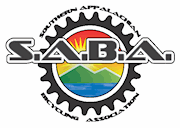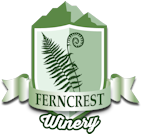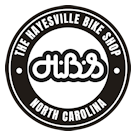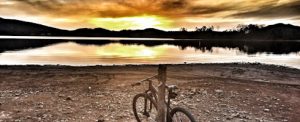Trail Guru Mike Riter takes time out from his busy schedule cutting our trail to answer a few candid questions.
Editor: Considering the trails you have designed, what do you think makes Jackrabbit special or unique?
Mike: Because it’s designed and built for Special and Unique people!
Seriously though, the topography, location, nearby campground and lake all work together to create the perfect situation for a spectacular bicycle trail. The opportunities we have to create different experiences and challenges will provide something for everyone.
Editor: What has been the most challenging aspect of building Jackrabbit?
Mike: Keeping Joanna happy!
Actually the weather always poses the biggest challenge for us. Earlier this summer it was too dry to compact the tread and as we progress into winter we are getting more and more days with it being too wet. There really is a rather narrow window of opportunity when the soil moisture is just right to build trail.
Editor: Outside of SABA volunteers, what creatures have you seen frequently out on the trail?
Mike: Well, there was this one week I kept seeing something large and hairy walking around the trail near the equipment. I usually saw it in the morning but rarely late in the afternoon. As it turns out it was just Jeff, one of my guys.
I have seen several hawks, and lots of squirrels, there might be a correlation there! Other than that wildlife has been pretty quiet. I have seen some deer and saw a beautiful red fox last year.
I don’t know if I would call all of them creatures, but the volunteers who help on the trail are tops in my book!
Editor: Budget aside, which technical trail features would you like to add?
Mike: I really get a kick out of small, low consequence ttf’s (technical trail features). I would include them on the more advanced trails as alternate lines and construct them out of native materials (rock) as much as possible. Large rock steps, rock gardens, and log rides or small ladder bridges built low to the ground are perception challenges rather physical challenges. What I mean by that is perception challenges are ttf’s that are easy to negotiate physically, but look hard or scare you mentally, so the challenge is created by changing a persons perspective.
Editor: How do you go about making these sustainable and lots of fun at the same time?
Mike: Ancient Chinese secret!
Honestly though, being able to build sustainable trails that remain interesting to the intended users is an art. The person building the trail must participate in those particular sports or activities to really understand what they (users) are looking for. That knowledge has to then be blended back into design and construction techniques that will last practically indefinitely.
Editor: What super power would you like to have?
Mike: Without revealing my super secret persona (super trail guy), I would like to be able to fly. Given how much I travel it would be nice to be able to skip the whole airport thing. Of course I would have to be careful so I wouldn’t divulge me super secret persona (super trail guy), because if it got out (super trail guy) that I was a super hero, then everyone would expect me to produce trails much faster!
Editor: What’s the crew’s funniest moment while building Jackrabbit?
Mike: There was a situation about a month ago when we were working on the trail. I bumped a tree with the machine and heard a loud squeak just as a squirrel fell out of a tree and landed on my back. I screamed and thought I was being attacked by the rodent from hell. I rolled around on the ground trying to get rid of it. I finally managed to grab it by the tail and just flung it! After sailing several feet through the air it landed on one of the other trail building machines and Jeff swears it snarled at him before launching itself in his direction. He tried to run, but the demonic squirrel was faster and caught him mid stride. He was wearing a loose shirt and the squirrel ran inside it and in his desperation to get rid of it, he started running into trees thinking that would at least shake it loose. He finally tripped and rolled to the edge of the lake where a boat was slowly passing by. The enraged squirrel seized the opportunity to escape the repeated tree bashing and jumped from Jeff’s battered body to the boat. Amid the tortured screams of the inhabitants of the boat as they threw themselves overboard I swear I saw the squirrel leap into the drivers seat and steer the boat for the distant shore!
That’s my story and I’m sticking to it! Fortunately it seems almost every day we laugh about something.
Editor: In your experience with designing and constructing trails, what seems to be the key ingredient that brings people back to a particular trail over and over again?
Mike: Creating that experience that in the end makes the difference between a person saying “that trail was okay” and “WOW! That was the best trail I’ve ever been on”. Mostly that experience is created by providing a mix of challenges, flow types, and scenery all on the same trail system. A truly great trail system should provide the opportunity for a different challenge, or something new to see over and over again.
Editor: What are your thoughts on “tread lightly” and minimal trail impact when it comes to holding events such as races (especially during wet conditions)?
Mike: Welcome to my #1 soap box issue! I rarely miss an opportunity to talk to user groups about using trails when they are wet. Everyone has an impact on trails, but those impacts get multiplied ten fold when the trail is used wet.
All users, promoters and land managers have a responsibility to manage events so that trails aren’t seriously damaged. Many promoters will try to schedule a rain date or plan their events during times of the year when the trail is less likely to be wet.
Fortunately a well designed and constructed trail will not stay wet for very long after a rain storm. This means the trail can, in most cases, be used a few hours after a heavy rain with no ill affect.
Trash is another issue. Is it really so hard to pack it back out if you carried it in? I never understood the need for racers to throw empty Goo packets on the ground during an event. That’s what you have Jersey pockets for.
Editor: If you weren’t building trails for a living, what would you be doing?
Mike: I’ve always heard McDonalds is hiring!
That’s actually a good question. I’ve done a lot of different things in my life and could pursue several different directions. I have always wanted to race motorcycles (road) though and given the right circumstances may have tried that.
Editor: Mike, Thanks for taking the time out to answer these questions and helping create one of the best trail systems in the SE!
# # #
Call for Volunteers!…As always, we are constantly looking for volunteers to help on trail workdays and SABA is GRATEFUL for those that have helped out thus far. This is a huge undertaking and we need all the help we can get, even if it is for just a few hours. You don’t have to yield a chainsaw or lift heavy boulders, just lend a hand…every little bit helps!

















